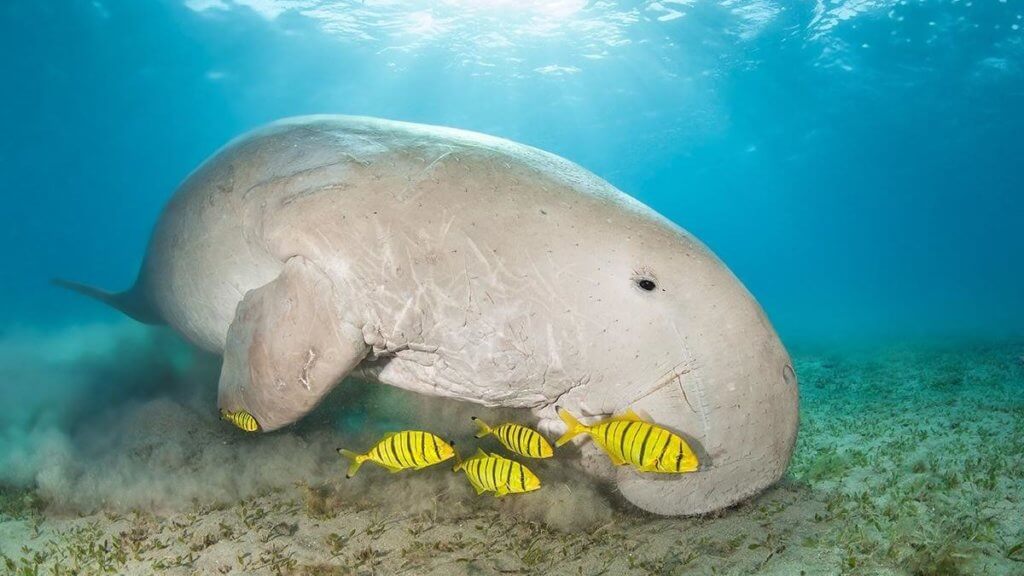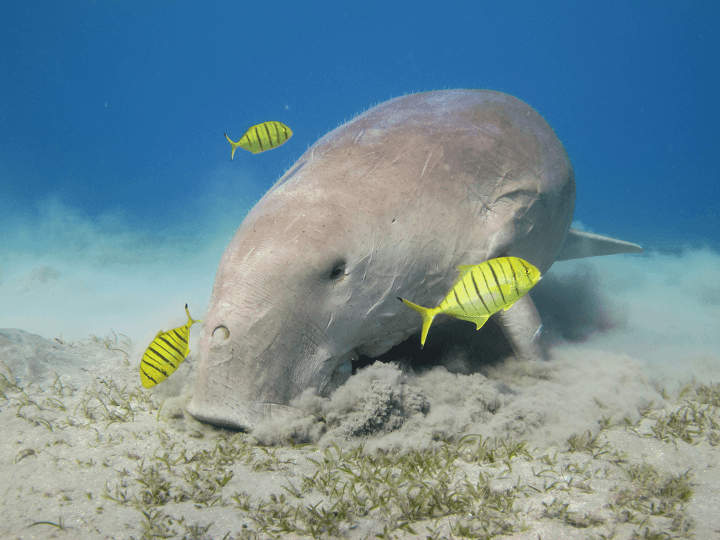Meet Qatar’s Dugongs
It is said that legends of the mythical mermaids stem from sailors mistaking the dugong for the sirens of Greek mythology after many months at sea. Today, talk about these creatures of the taxonomic order Sirenia have evolved from myth into a more collaborative initiative to protect the timid, vulnerable “sea cow.”
As mysterious as tales of mermaids were, these dugongs enjoy feeding on about 90 pounds of seagrass deep within the ocean seabed to avoid natural predators. While grazing, dugongs can hold their breath for up to 11 minutes as they strip through the seagrass meadows. Thanks to their herbivorous diet, these marine mammals can live up to 70 years. As intriguing as it sounds, they are more closely related to elephants than other marine mammals such as whales or dolphins. The planet’s only ocean-dwelling herbivore, dugongs, weigh about 550-1000 pounds and average up to nine feet in length.

To mark World Dugong Day on May 28th, QAIC highlights Qatar’s favorite local aquatic mammal and its contribution to the local marine ecosystems. As more about this unique animal is discovered, current research shows that Qatar has the second-largest dugong population after Australia.
While the reason is unknown, dugongs in Qatar tend to gather in herds as large as 840, which was observed as recently as 2020. While the oldest fossil found in Qatar dates back 20 million years, dugongs have inhabited Qatar’s peninsula for more than 7,500 years. If you’re hoping to catch a glimpse of these fascinating, slow-moving creatures while in Qatar, they can be typically observed swimming in the mangrove coves or seagrass beds of Semesma, Umbab and Dokhan.
Visit Qatar Museum’s website here to learn more about these “sirens” of the seas.

